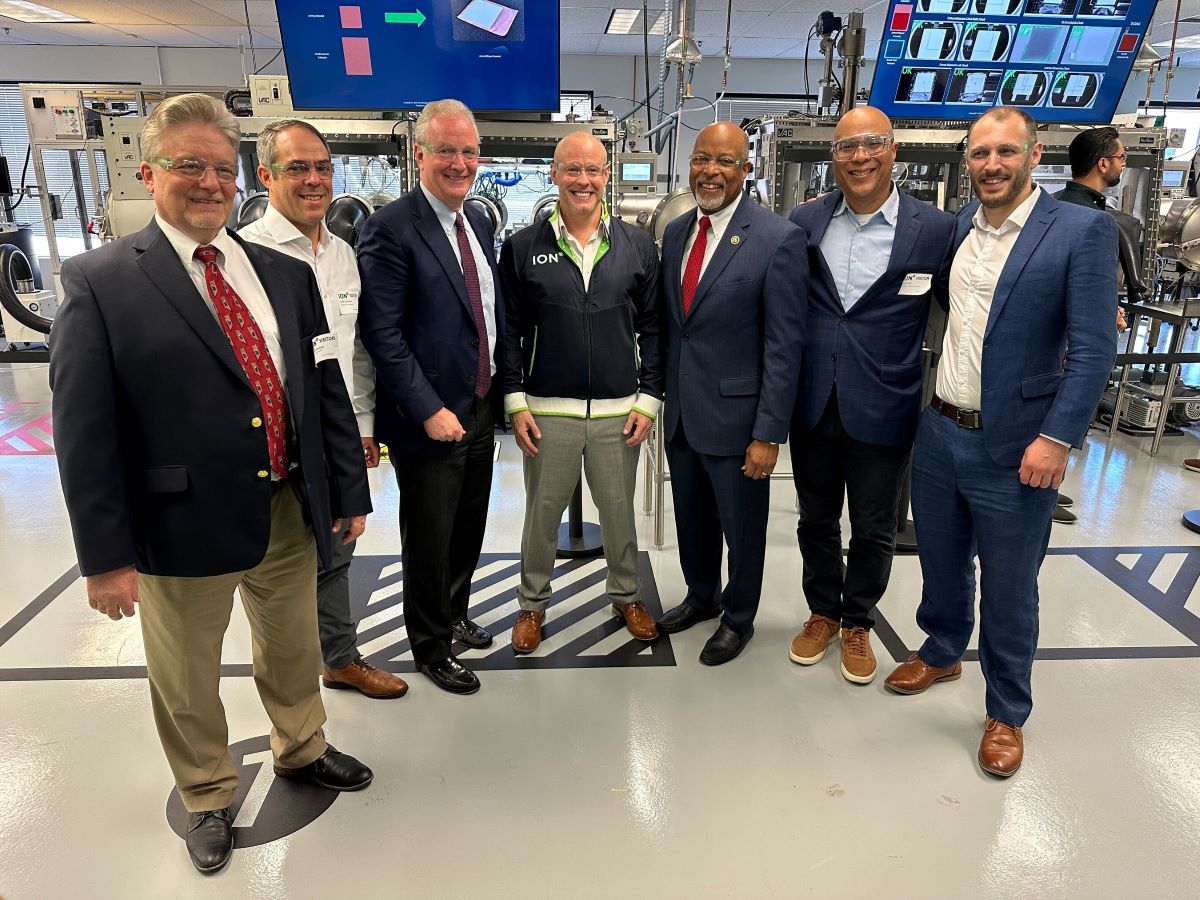Maryland’s first-ever solid-state battery pilot production line launches
A University of Maryland (UMD) startup began operating one of the largest U.S. factories for solid-state batteries (SSBs) Monday, giving a boost to the adoption of green technologies. The plant here will produce batteries that charge faster and store more power than lithium-ion batteries and will first be used in Department of Defense (DoD) applications, according to Ion Storage Systems (ION), the manufacturer. Founded in 2019, ION has developed a groundbreaking 3D ceramic electrolyte architecture that enables solid-state batteries to charge faster and provide greater range. Spun out of UMD’s Maryland Energy Innovation Institute, ION’s core technology is the brainchild of Dr. Eric Wachsman, who founded the company along with chief technology officer Dr. Greg Hitz. The pair’s expertise in SSBs and manufacturing, combined with CEO Ricky Hanna’s 20+ years of experience in batteries from Apple and Valence Technologies, has enabled the team to meet and exceed performance metrics for ION’s next-generation batteries. ION recently announced that its anode-less and compression-less SSB achieved a key customer and industry threshold for its first market deployment. ION's SSB successfully achieved and exceeded 125 cycles with less than 5% capacity degradation in performance offering the potential for more than 1000 cycles in future deployments. ION has been working with the DoD to rigorously test its SSB battery before expanding into other markets including electric vehicles, consumer electronics, and grid storage. ON April 29, 2024, ION commissioned a new automated cell production line, with VIPs in attendance, including U.S. Senate and Congressional members as well as Maryland State delegates. “As we transition to cleaner energy sources and reduce pollution, we need improved battery and energy storage technology. With federal funding from the Department of Energy, partnerships with the University of Maryland, and tax incentives through the Inflation Reduction Act, we are spurring new technological advancements to support homegrown, start-up businesses to power our clean energy future. Today’s production launch shows how we can leverage the innovation and ingenuity at our institutions to generate American manufacturing jobs right here in Maryland,” said U.S. Senator Chris Van Hollen. “I am proud that this company is born from the R&D of our flagship state school, the University of Maryland at College Park. Federal Grants from ARPA-E in the Department of Energy have furthered the development of this innovative technology, and collaboration with the University of Maryland and the Department of Defense ensures that we give our warfighters made-in-America technology that prevents adversaries from undercutting our national security capabilities. I commend ION in their innovation and look forward to more jobs generated and more green advances right here in the heart of my congressional district,” said U.S. Congressman Glenn Ivey (MD-04). Maryland State Delegate Fraser-Hidalgo also congratulated ION on their growing facility and remarked on social media, “I'm excited to see what you all do next for battery manufacturing in Maryland!” In addition, the company claims the batteries are 100% recyclable and produce 40% more power than conventional lithium-ion cells currently in consumer electronics and electric vehicles. "It's a new approach and it's a safer way to go," said Rep. Glenn Ivey (D) Maryland, who represents Prince George's County, where ION Storage Systems is headquartered in the shadow of the University of Maryland, where the technology was developed. To date ION’s technology has received over $30 million in federal funds and over $40 million in private investment. Thanks to its recent supply agreement with and investment by Saint-Gobain, ION is poised to manufacture its patented solid-state batteries at scale. ION is partnering with various government agencies to demonstrate the viability of ION's SSBs to sustain operations in highly demanding environments. Related News Coverage:
Related Articles: May 6, 2024 Prev Next |
|


